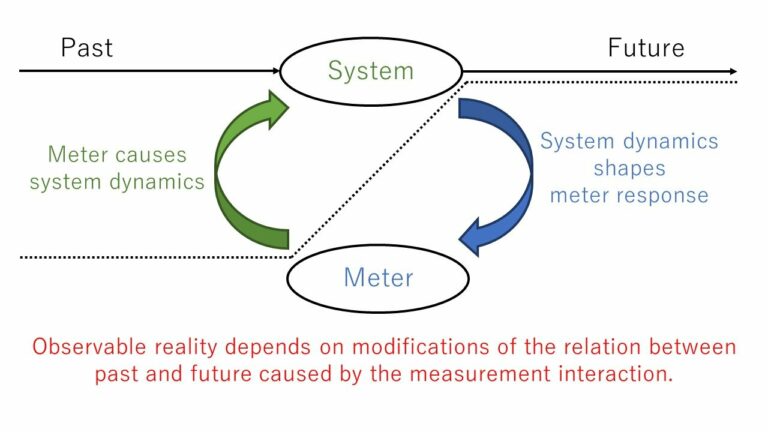Does the Act of Measurement Shape the Reality it Reveals?
As the precision of a measurement nears the uncertainty limit defined by quantum mechanics, the measurement outcomes are influenced by the dynamics of the interactions with the measuring device employed to ascertain a physical property of the system.
This discovery may provide insight into the frequent occurrence of conflicting results in quantum experiments and the potential contradiction of fundamental assumptions about physical reality. Two quantum physicists from Hiroshima University recently investigated the dynamics of a measurement interaction, where the identification of a physical property’s value is linked to a quantitative change in the state of the measuring device.
This presents a challenging problem because quantum theory does not assign a value to a physical property unless the system is in a “eigenstate” of that property—a limited set of specific quantum states where the property has a fixed value. The researchers addressed this fundamental issue by integrating information about the system’s past with information about its future, creating a description of the system’s dynamics during the measurement interaction.
This demonstration highlighted that the observable values of a physical system are contingent on the dynamics of the measurement interaction through which they are observed. The findings of this study were published on July 31 in Physical Review Research. Holger Hofmann, a professor in the Graduate School of Advanced Science and Engineering at Hiroshima University in Hiroshima, Japan, remarked, “There is considerable disagreement about the interpretation of quantum mechanics because distinct experimental results cannot be reconciled with the same physical reality.”

“In this manuscript, we explore the influence of quantum superpositions within the dynamics of measurement interactions on the observable reality of a system, as manifested in the response of a meter. This represents a significant advancement in elucidating the concept of ‘superposition’ in the realm of quantum mechanics,” stated Hofmann. Quantum mechanics defines a superposition as a state where two distinct realities appear to coexist, only becoming distinguishable through appropriate measurements.
The team’s analysis indicates that superpositions delineate diverse aspects of reality contingent on the specific measurements conducted. The existence of an object’s reality is intricately tied to its interactions with the surrounding environment. “Our findings indicate that the physical reality of an object is inseparable from the context of all its interactions with the environment, encompassing past, present, and future. This challenges the prevalent notion that our world can be reduced to a mere arrangement of material building blocks,” explained Hofmann.
According to quantum theory, the shift in the meter representing the observed value of a physical property in a measurement is contingent on the system’s dynamics influenced by the back-action fluctuations, where the meter disrupts the state of the system. Quantum superpositions between potential system dynamics shape the meter’s response and attribute specific values to it. The authors elaborated that the fluctuations in the system dynamics are contingent on the strength of the measurement interaction. In scenarios with weak interactions, the system dynamics’ fluctuations are minimal, and the meter shift can be determined using the Hamilton-Jacobi equation—a classical differential equation expressing the relation between a physical property and its associated dynamics. In instances of stronger measurement interactions, intricate quantum interference effects between various system dynamics emerge.
Thorough measurements necessitate the complete randomization of system dynamics, constituting a superposition of all potential dynamics. Quantum interference effects selectively highlight components of the quantum process aligning with the eigenvalues of the physical property. Eigenvalues, representing specific outcomes in quantum mechanics like precise photon numbers or spin orientations, arise from the comprehensive randomization of dynamics. The study suggests that such values are products of quantum interferences in sufficiently robust measurements, challenging the assumption that localized particles or integer spin values are measurement-independent elements of reality. This prompts a reconsideration of our understanding of the significance of experimental data. Hofmann and his team anticipate further clarification of the conflicting results observed in various quantum experiments. “Context-dependent realities can provide explanations for a broad array of seemingly paradoxical quantum effects. We are actively working on refining explanations for these phenomena, aiming to cultivate a more intuitive grasp of the fundamental concepts in quantum mechanics, free from misconceptions arising from a simplistic belief in the reality of microscopic objects,” Hofmann remarked. Tomonori Matsushita from the Graduate School of Advanced Science and Engineering at Hiroshima University in Hiroshima, Japan, also contributed to this research.
This article is republished from PhysORG under a Creative Commons license. Read the original article.
Do not forget to share your opinion with us to provide you with the best posts !




0 Comments